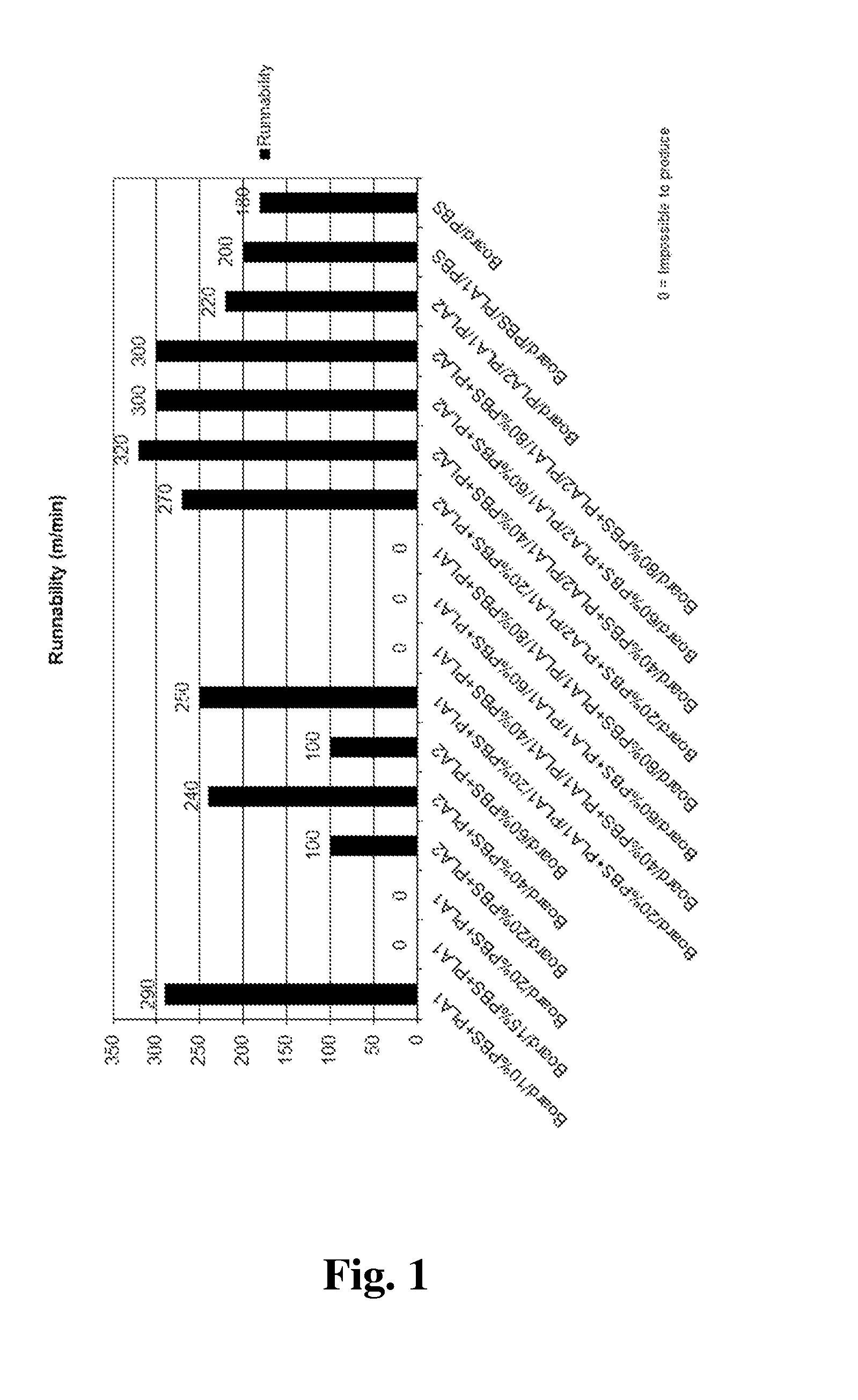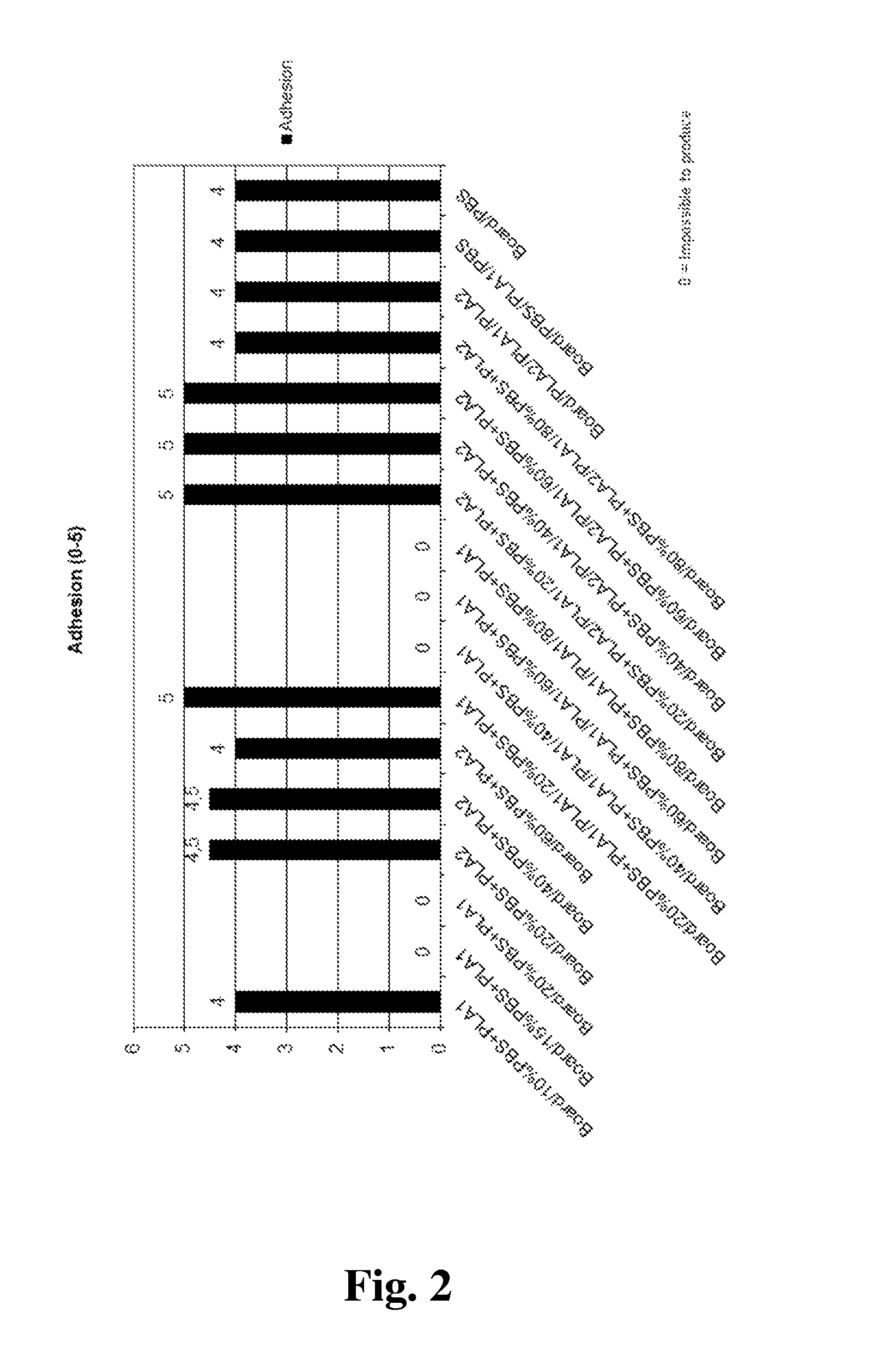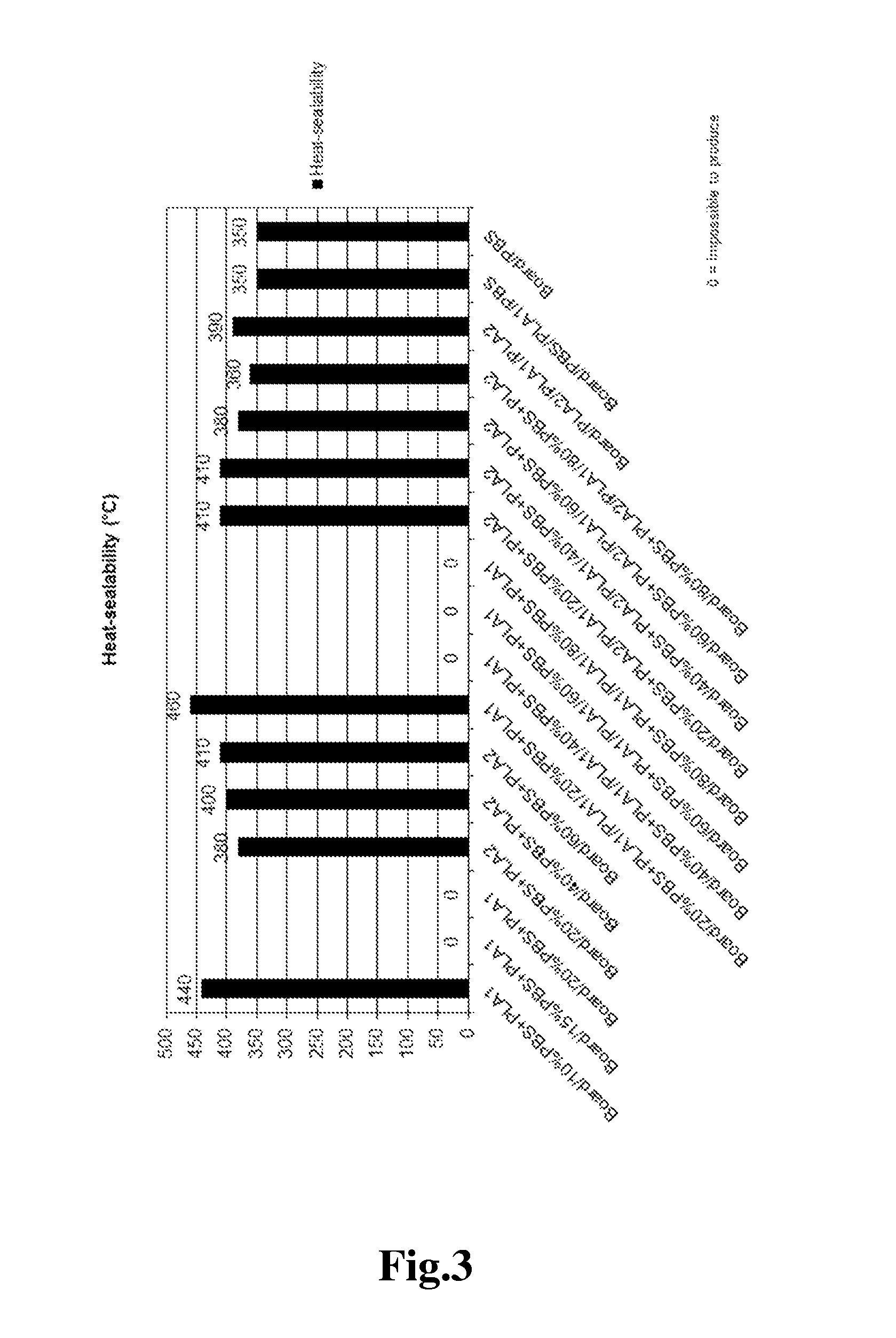Method for manufacturing biodegradable packaging material, biodegradable packaging material and packages and containers made thereof
a biodegradable packaging and biodegradable technology, applied in the direction of packaging foodstuffs, packaging goods types, synthetic resin layered products, etc., can solve the problems of high extrusion temperature, high extrusion temperature, and inability to biodegrade, so as to improve the runnability of paper or board machinery, reduce material costs, and improve the effect of adhesion
- Summary
- Abstract
- Description
- Claims
- Application Information
AI Technical Summary
Benefits of technology
Problems solved by technology
Method used
Image
Examples
examples
[0080]FIGS. 6a-6c show as examples five structural embodiments of comparative packaging materials (FIGS. 6a and 6b) and packaging materials according to the present invention (FIGS. 6c-6e). “PLA1” means low melt index PLA; “PLA2” means high melt index PLA; “PBS” means polybutylene succinate and “board” indicates the fibrous substrate layer. Instead of PBS even other biodegradable polymers may be used.
[0081]There are extruded or coextruded monolayer or multilayer coatings of a blend of PLA2 and PBS and mere PLA1 on one side or on both sides of a fibrous paper or board substrate (“board”). The share of PLA2 in the blend is 20 to 95 weight-%, preferably 30 to 60 weight-%, and the share of PBS may vary from 5 to 80 weight-%, preferably being 40 to 70 weight-%. As an optional third component at most 5 weight-% of an acrylate copolymer such as ethylene butyl acrylate glycidyl methacrylate terpolymer (EBAGMA) may be included in the blend. The substrate may be paper, paperboard or cardboard...
PUM
| Property | Measurement | Unit |
|---|---|---|
| Temperature | aaaaa | aaaaa |
| Weight | aaaaa | aaaaa |
| Time | aaaaa | aaaaa |
Abstract
Description
Claims
Application Information
 Login to View More
Login to View More - R&D
- Intellectual Property
- Life Sciences
- Materials
- Tech Scout
- Unparalleled Data Quality
- Higher Quality Content
- 60% Fewer Hallucinations
Browse by: Latest US Patents, China's latest patents, Technical Efficacy Thesaurus, Application Domain, Technology Topic, Popular Technical Reports.
© 2025 PatSnap. All rights reserved.Legal|Privacy policy|Modern Slavery Act Transparency Statement|Sitemap|About US| Contact US: help@patsnap.com



